Adding flies and fixing figures
on Tuesday, May 21st, 2024 8:56 | by Björn Brembs
Added more flies to the aPKC knock-out in FoxP neurons. Now the knock-outs are close to zero, but one of the controls, too. Still too early to say much. The figure looks ok now, but the Bayes Factors get chopped off. need to fix this. As I’m, already working on some figures (histograms) in the code, I can fix this as well.

Category: operant self-learning, PKC | No Comments
Results for Dop1R1-RNAi, Amon-RNAi and the course data
on Tuesday, May 21st, 2024 8:11 | by Maja Achatz
Firstly, I did an experiment where Dop1R1 was knocked down via RNAi. The following shows the results:

For the next experiment, the controls groups were the same, however in the experimental group Amon was down regulated. These are the results:

Lastly, in the course the data for the larvae experiment was collected only under blue light, so I used the same crossings and tested them under red light to use as a control.

Category: Kenyon cells, Larve, Mushroom Body, Optogenetics, Uncategorized | No Comments
First data from aPKC knock-out in FoxP neurons
on Monday, May 13th, 2024 8:49 | by Björn Brembs
When Andi tested his aPKC CRISPR knock-outs, he used the Tang torque meter setup, where the OMRs aren’t recorded. So I’m attempting to replicate his results and compare OMRs between groups.

It looks like I need to tweak the graph in some way to make the density plots show up. Obviously, N is too low to say anything yet, but I need to work on the plot.
Category: Uncategorized | No Comments
Results for MB145B, SS01716 and SS02180
on Monday, April 8th, 2024 10:33 | by Maja Achatz
All figures show the results for preference tests (salt/pure) conducted under red and blue light for different gal4-lines.
MB145B:

SS01716:

SS02180:

Category: DAN, Larve, Mushroom Body, Optogenetics | No Comments
Results for amon-RNAi and MB143B
on Monday, February 26th, 2024 12:17 | by Maja Achatz
The first figure shows the results for the preference test (salt/pure) conducted with amon-RNAi only under red light.
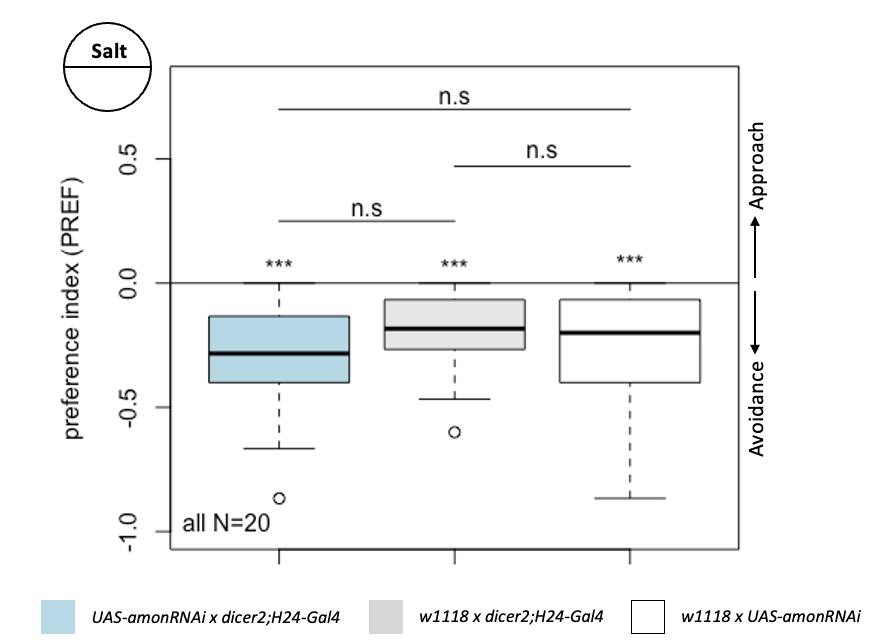
For the next experiment I conducted the same preference test but with the split-gal4 line MB143B under red and blue light.
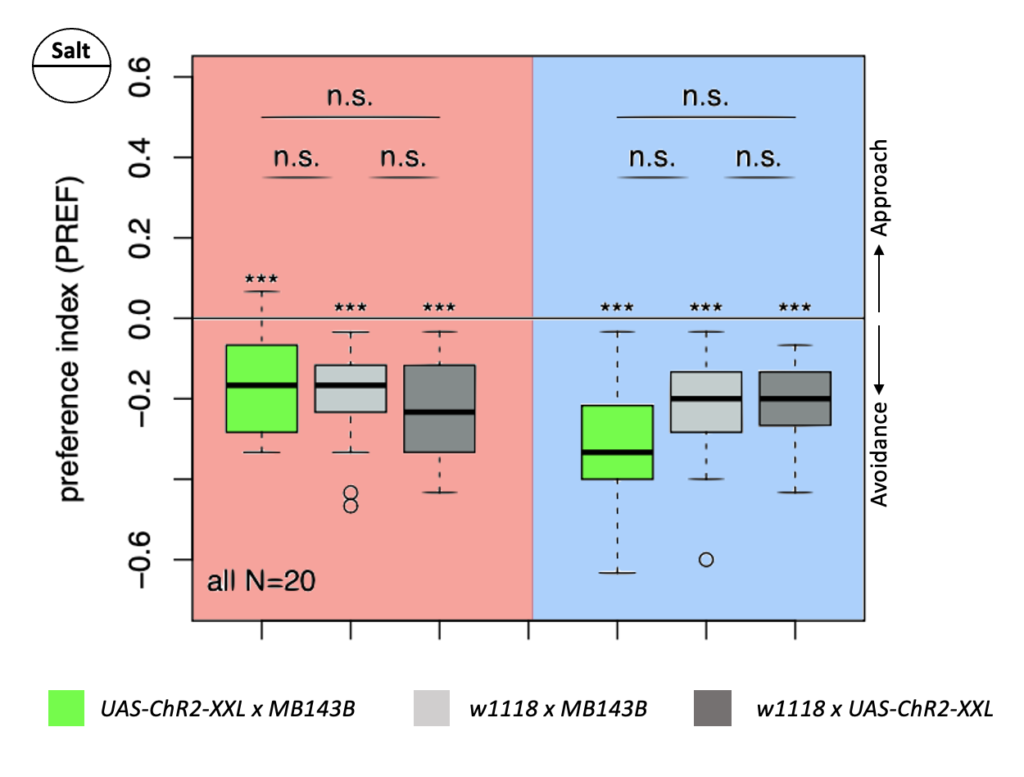
Category: Larve, Mushroom Body, Optogenetics | No Comments
Optomotor graph coded
on Wednesday, February 21st, 2024 10:15 | by Björn Brembs
There had been some concerns about the optomotor display in the group evaluation sheets showing right-turning torque on the left side of the graph and vice versa. Also, the use of standard deviations seemed to blur differences between the experimental groups:

Because of these concerns, I have swapped the traces and used standard error of the means instead of standard deviations:

What do you think? Better or worse? Feedback very welcome!
Category: Optomotor response, R code | No Comments
Results sNPF mutants
on Tuesday, February 20th, 2024 12:52 | by Maja Achatz
The following picture shows the results for the conducted preference tests (pure/salt) for sNPF mutants. All Experiments were performed under red light.
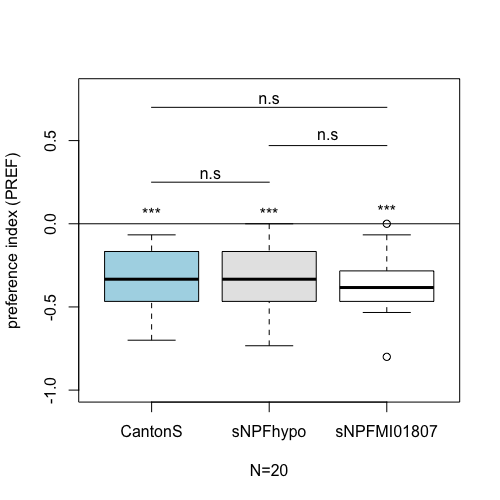
Category: Larve | No Comments
Final ‘Joystick’ test results
on Monday, January 29th, 2024 11:30 | by Devashree Joglekar
Over the course, control and test lines were experimented with under ‘Joystick’. The test lines include 13:0273-Gal 4 line, SS56699 line, and TH-C-AD; TH-D-DBD line. The tests were done under red and yellow light conditions.
Red light conditions:
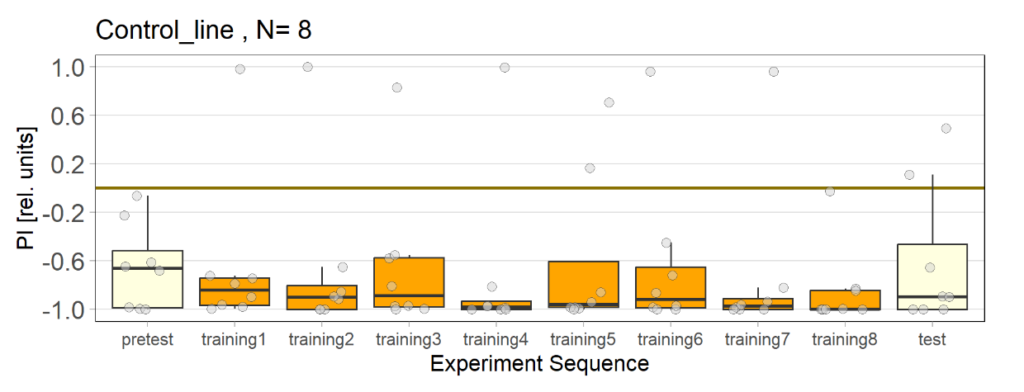
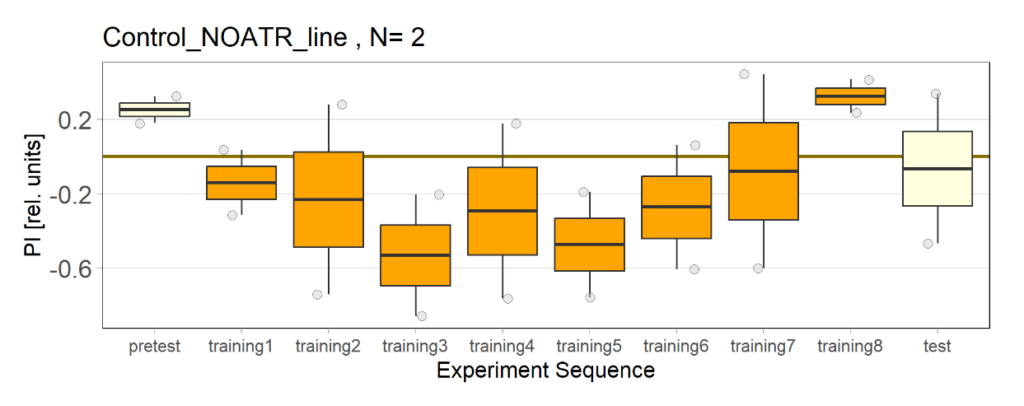
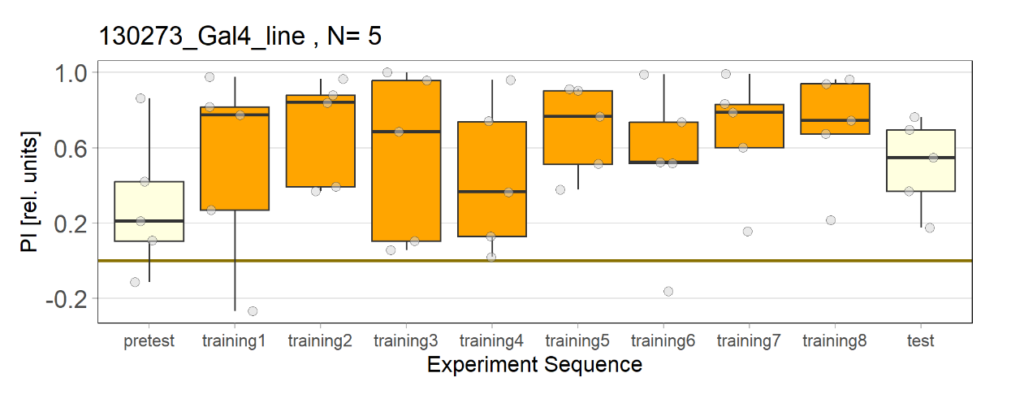
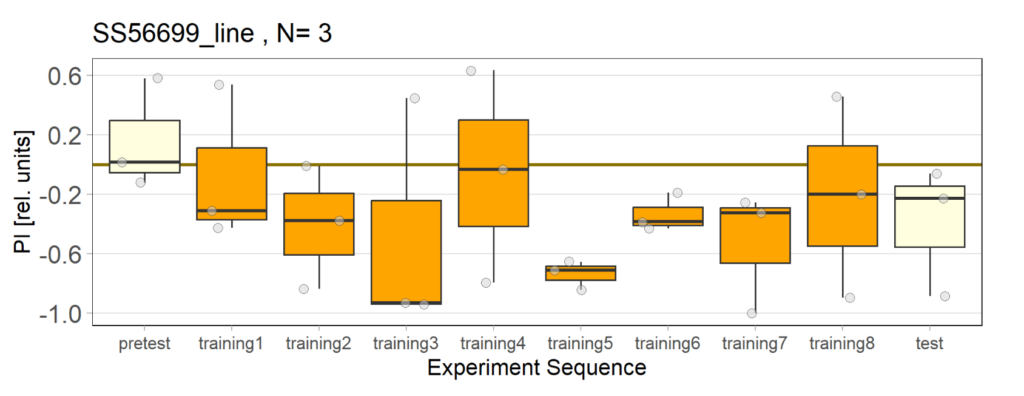
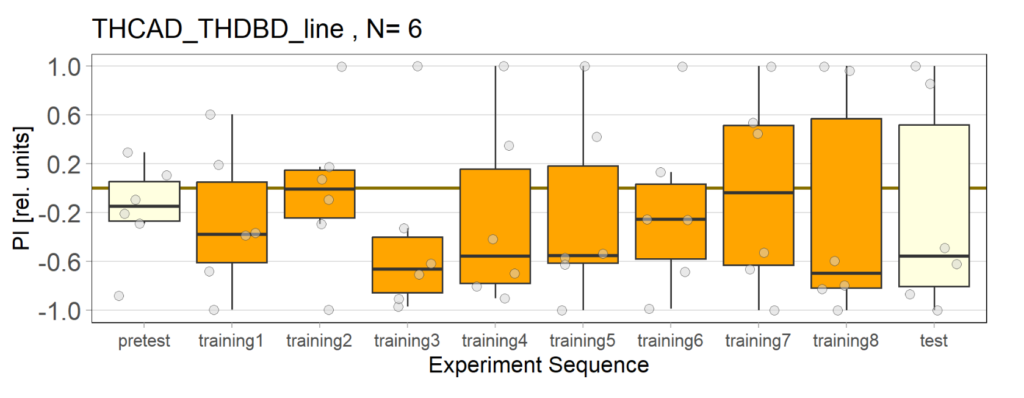
Yellow light conditions:
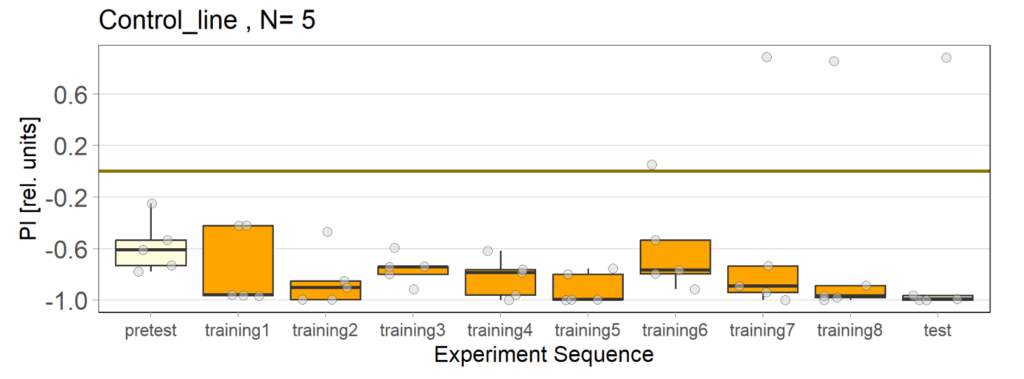
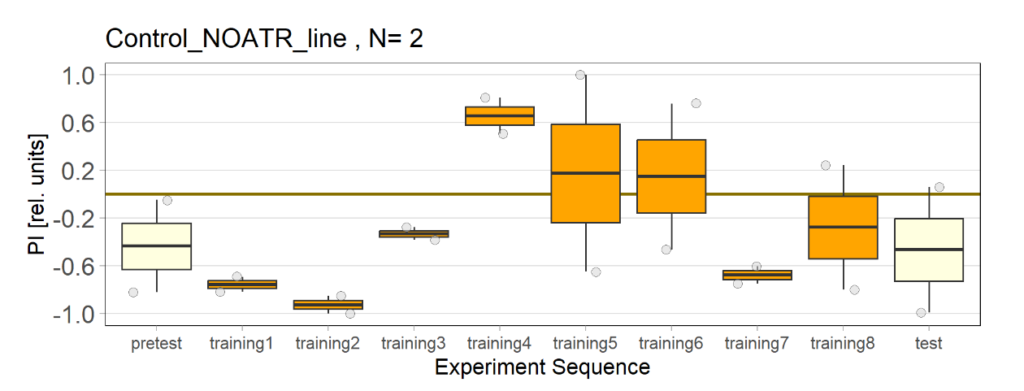
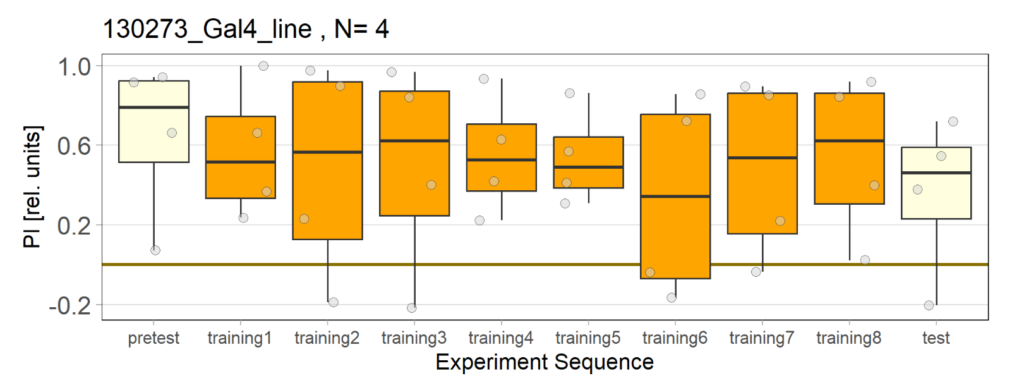
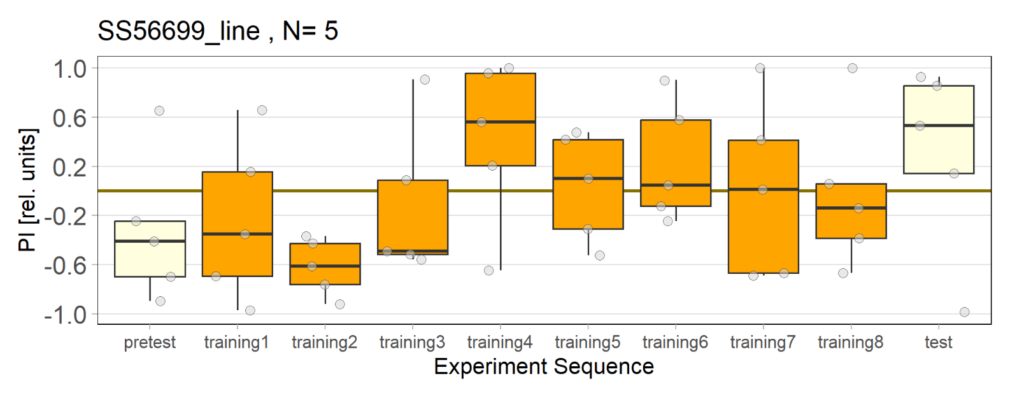
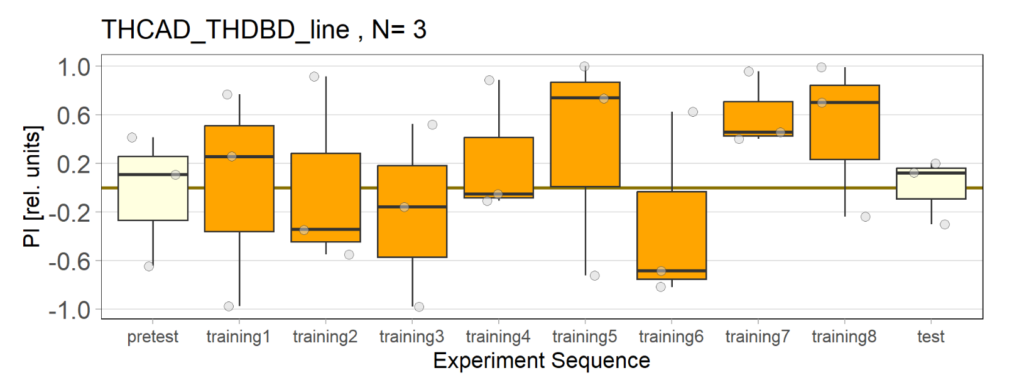
Category: Operant reinforcment, Optogenetics | No Comments
Finally done: rut and rsh flies better at self-learning
on Monday, January 22nd, 2024 1:36 | by Björn Brembs
At long last, I got all the flies together that we need for sufficient statistical power. As the preliminary data had indicated, WTB flies don’t learn with the short training, while rut and rsh flies do just fine.

However, this may be due to genetic background effects, so we need to check the CRISPR mutants.
Category: Operant learning, operant self-learning, Radish | No Comments
T-maze (dark-light condition) test results
on Monday, December 11th, 2023 2:40 | by Devashree Joglekar
The flies without curly (straight wings) for the line NorpA;20xUAS-Chrimson were tested in T-maze in dark-light conditions. The tests were conducted on 23 November, 27th November, and 29th November 2023. 8 tests were done for each pink and green line; hence a total of 16 tests were conducted. A total of 273 flies and 233 flies were tested for pink line and green line respectively.

Category: temperature_phototaxis | No Comments
